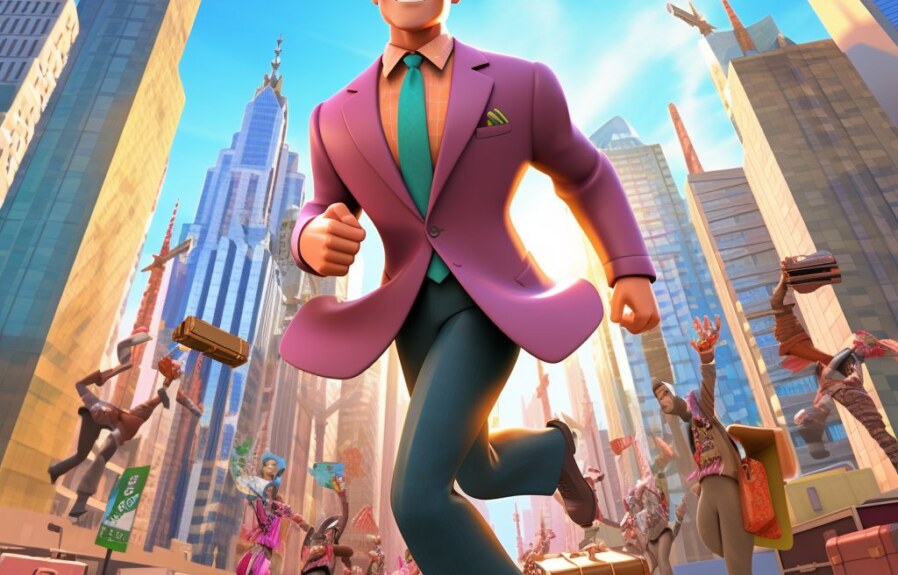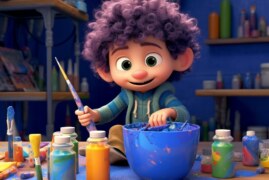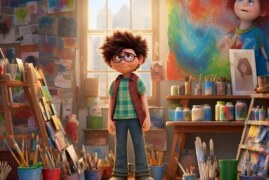Drawing a human figure might seem like a daunting task, especially if you’re trying to draw a specific gender. Many artists find it challenging to capture a male figure on paper, but with a little knowledge and practice, it can be achieved with great accuracy. From dealing with the proportions to the posture, there are several factors that contribute to drawing an accurate male figure. In this article, we’ll discuss some practical tips and techniques on how to draw men and improve your skills as an artist.
1. Introduction: The Basics of Drawing Men
Drawing men can seem like a daunting task, but with a few basic principles, anyone can master this skill. Here are some tips to get you started:
1. Understand proportions: Proportions are key when drawing men. Generally, the body can be broken down into eight equal parts, with the head taking up one of those parts. The shoulders and hips should be around the same width, with the torso tapering in towards the waist. The arms and legs should be in proportion to the body as well.
2. Pay attention to muscle structure: Men tend to have more defined muscle structure than women, so it’s important to understand how muscles work and how they look when they flex. Knowing these details will help you create more realistic-looking figures.
3. Study poses and gestures: Men can be drawn in a variety of poses and gestures, from standing still to running or jumping. Take time to study these poses and how they affect the body’s proportions and muscle structure. This will help you create dynamic and engaging figures.
Remember, mastering the basics of drawing men takes practice and patience. Keep these tips in mind, and don’t be afraid to experiment and try new things. With time and dedication, you’ll be drawing realistic and dynamic men in no time.
2. Understanding the Anatomy of the Male Figure
The anatomy of the male figure can be complex and challenging to comprehend. To help, here are some essential parts of male body anatomy:
1. Torso: The torso is the chest and abdominal area of the male body. The muscles of the torso are essential in providing strength and stability for the body. The chest muscles are known as the pectoralis major and minor, and the abdominal muscles are the rectus abdominis, internal obliques, and external obliques.
2. Limbs: The male arms and legs are vital for movement and balance. The upper arms have two primary muscles, the biceps, and triceps. The thighs have several key muscles, including the quadriceps and hamstrings.
3. Genitalia: The penis, testicles, and scrotum are the primary male genitalia. These organs are located between the legs and are responsible for sexual reproduction. It is important to note that some men may have variations in their genitalia, such as microphallus or hypospadias.
Understanding the anatomy of the male body is essential for medical professionals, artists, and athletes. The complex and intricate design of the male body can be appreciated by all.
3. Tips and Techniques for Capturing Male Features
When capturing male features, it is important to pay attention to the details. Here are some tips and techniques you can use to make your sketches more realistic:
– Study facial hair: Men tend to grow hair on their faces, including beards, mustaches, and sideburns. When drawing a man’s face, be sure to include these features if they’re present. Use light, short strokes to create the appearance of hair.
– Watch the jawline: Men tend to have squarer jawlines than women. Focus on the shape of the jaw when drawing a male face, and try to make it more angular than round.
– Pay attention to eye shape: Men’s eyes tend to be more narrow and slanted than women’s. Be sure to capture this in your sketches. Additionally, men’s eyelashes are typically shorter and less visible than women’s.
– Define the nose: Men’s noses tend to be larger and more pronounced than women’s. Use thicker lines to define the shape of the nose, and make it a focal point of the face.
By paying attention to these details, you can capture male features more accurately in your sketches. Remember to practice regularly to hone your skills!
4. Developing Your Own Style and Approach to Drawing Men
When it comes to drawing men, many artists struggle with finding their own unique style and approach. However, there are several things you can do to develop your own style and create drawings that reflect your personality and creativity.
First, take the time to study different styles and approaches to drawing men. Look at the work of other artists and take note of what you like and what you don’t like. Experiment with different techniques, such as crosshatching, stippling, or shading with a pencil or pen, to see what works best for you.
Another important aspect of developing your own style is to draw what inspires you. Whether it’s a certain facial expression or a particular body type, focus on the things that interest you and let that guide your approach to drawing men. Don’t be afraid to take risks and try new things, and remember that practice is key to improving your skills and developing your own unique style.
Ultimately, finding your own style and approach to drawing men is about expressing yourself and staying true to your artistic vision. By exploring different techniques and drawing what inspires you, you can create drawings that are truly your own and stand out from the crowd.
5. Practicing and Refining Your Skills: Exercises and Resources
If you want to improve your skills in any field, practicing regularly is key. Here are some exercises and resources that can help sharpen your skills:
– Practice, practice, practice: Whether it’s writing, coding, or design, practice makes perfect. Set aside time each day to work on projects or complete exercises that challenge you. The more you work, the more you’ll learn and refine your skills.
– Join communities and forums: Connect with others who share your interests and exchange ideas and feedback. Some communities have exercises or challenges that you can participate in to improve your skills.
– Take online courses: There are plenty of online courses available that can help you learn new skills or refine existing ones. Sites like Coursera, Udemy, and Skillshare offer a wide variety of courses in many different fields.
– Read and research: Keep up-to-date with the latest trends and techniques in your field by reading blogs, books, and articles. Take notes on what you learn and look for ways you can apply new techniques to your own work.
Remember, improving your skills takes time and effort. Don’t get discouraged if you don’t see immediate results. Keep practicing and learning, and you’ll see improvement over time.
6. Common Mistakes to Avoid When Drawing Men
When it comes to drawing male figures, there are a few common mistakes that beginners tend to make. Here are some of the most important things to keep in mind when sketching masculine characters:
- Avoid making the shoulders too narrow: Men tend to have broader shoulders than women, so it’s important to make sure your male figures have the appropriate width in this area.
- Don’t forget the muscles: Even if your male character isn’t particularly muscular, there should be some indication of underlying muscle structure. Pay special attention to areas like the biceps, triceps, chest, and abs.
- Be mindful of proportions: Make sure your male character’s head and body are properly proportioned. A common mistake is to make the head too small in relation to the body, which can create an unbalanced look.
Remember, practice is key when it comes to improving your figure drawing skills. Make sure you take the time to observe real-life male figures and study their proportions and muscle structure to improve your art. By avoiding these common mistakes, you’ll be well on your way to creating more realistic and accurate male characters in your artwork.
7. Final Thoughts: Embracing the Challenge of Drawing Men
Drawing men can be challenging, but it’s also incredibly rewarding. If you’re struggling with achieving a realistic representation of male figures in your art, don’t be discouraged! Here are a few tips to keep in mind.
- Bone structure: Men typically have thicker, more pronounced bone structure than women. Pay attention to the shape of their jawline, forehead, and brow ridge.
- Muscle mass: Men usually have more visible muscle mass than women, particularly in areas like the chest, shoulders, and arms. Study anatomy to understand how muscles function and interact with each other.
- Body proportions: Men tend to have broader shoulders and narrower hips than women, and their legs are often longer in relation to their torsos. But be careful not to overemphasize these differences as individual body types vary widely.
Remember that everyone’s drawing journey is different, and it’s okay to make mistakes along the way. Embrace the challenge of drawing men as an opportunity to grow and learn new skills. With practice, patience, and perseverance, you’ll be able to create striking and dynamic male figures in your artwork.
People Also Ask
1. What are some tips for drawing men?
To draw men, start by sketching the basic body structure, including the head, torso, arms, and legs. Ensure that the proportions are correct and the muscles are in the right place. Pay attention to details such as facial hair, hairstyles, and clothing to make it look realistic.
2. How do you shade in men’s drawings?
Shading is essential to add depth and dimension to men’s drawings. Use a light source to determine the areas of light and shadow. Build up the shading gradually and use blending tools such as a blending stump or paper towel to smooth out any rough patches.
3. What are the common mistakes to avoid when drawing men?
Some common mistakes to avoid when drawing men include incorrect proportions, weak facial features, lack of muscle definition, and awkward body postures. Focus on getting the basic structure right before adding in any details.
4. How do you draw men in different poses?
To draw men in different poses, start by sketching the basic body structure and then create a stick-figure outline of the pose. Add in the details such as muscles, clothing, and facial features. Pay attention to foreshortening and perspective to make it look realistic.
5. What are the best tools to use for drawing men?
The best tools to use for drawing men include pencils (mechanical or traditional), erasers, blending tools, and paper. Experiment with different types of pens, markers, and digital drawing programs to see what works best for your style.
Conclusion
Drawing men can be challenging, but with practice and patience, anyone can create a realistic and engaging portrait. Focus on getting the basic structure and proportions right and pay attention to details such as shading, clothing, and hairstyles. Experiment with different tools and techniques to develop your style and find what works best for you.



